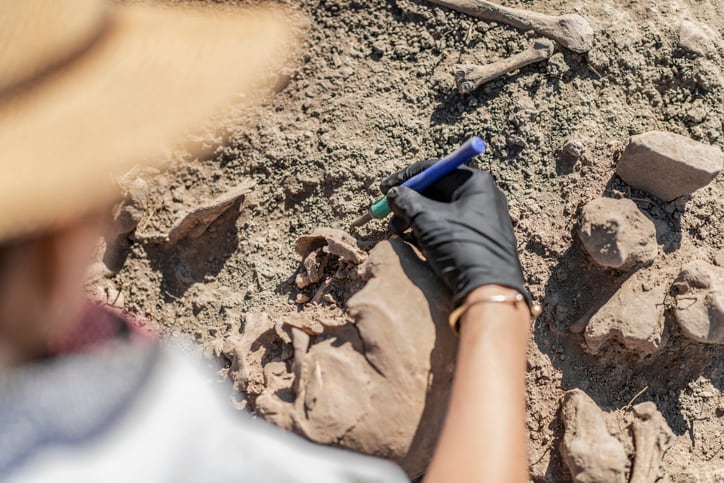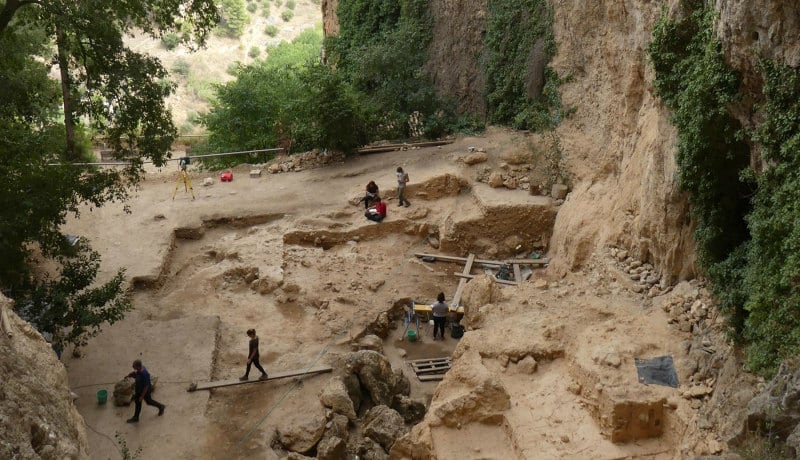Just in the past century, humans have progressed to live longer, and they have also grown to be taller and fatter. While this physical evolution is clear to scientists, far less is known about the evolution of bacterial ecosystems in the human gut.
To gain further insight into microbial communities, an international team of researchers looked to DNA found in indigenous human paleofeces. Using extremely high levels of genomic sequencing, the desiccated excrement was extracted from unusually dry caves in Utah and northern Mexico. The research was published in the journal Nature.
Methods
Scientists performed a large-scale de novo assembly, which involves constructing genomes from a large number of DNA fragments with no prior knowledge of the correct sequence of those fragments. The authors point out that despite the potential of de novo assembly to discover previously undescribed species-level genome bins, the method has not been applied to paleofeces due to the challenges posed by highly damaged DNA.
Given the well-preserved DNA, the team was able to examine paleofeces from eight authenticated human samples (1,000–2,000 years old) and reconstructed 498 medium- and high-quality microbial genomes.
The exceptionally well-kept ancient gut samples were compared against DNA in 789 modern samples. Just over half of the modern samples were from people on industrialized Western diets and the rest were from people consuming non-industrialized foods, typically food grown within their own communities.
According to the authors, the team performed far deeper sequencing of DNA than previous research, with 400 million reads of DNA for one specimen.
Novel species revealed
Among the 181 genomes with the strongest evidence of being ancient and of human gut origin, 39% were of previously undescribed gut microorganisms from ancient microbiomes.
“In comparison to 789 present-day human gut microbiome samples from eight countries, the palaeofeces samples are more similar to non-industrialized than industrialized human gut microbiomes. Functional profiling of the palaeofeces samples reveals a markedly lower abundance of antibiotic-resistance and mucin-degrading genes, as well as enrichment of mobile genetic elements relative to industrial gut microbiomes,” the report noted.
Highlighting the vast differences between microbiome populations, a bacteria known as Treponema succinifaciens was found in every one of the eight ancient microbiomes. However, Aleksandar Kostic, PhD, the senior author of the paper, said the bacteria was not found in a single Western microbiome that they analyzed.
"In ancient cultures, the foods you're eating are very diverse and can support a more eclectic collection of microbes," Kostic said. "But as you move toward industrialization and more of a grocery-store diet, you lose a lot of nutrients that help to support a more diverse microbiome."
These Western diets that cause decreased gut microbial diversity in industrial populations are also associated with chronic diseases.
The gut and disease
The report noted that ancient microbial populations had fewer genes related to antibiotic resistance. The ancient samples also show lower numbers of genes that produce proteins that degrade the intestinal mucus layer, which then can produce inflammation that is linked to various diseases.
In previous studies of children in Finland and Russia, Kostic et al showed that children in industrialized regions were much more likely to develop type 1 diabetes than those in non-industrialized areas.
"We were able to identify specific microbes and microbial products that we believe hampered a proper immune education in early life," explained Kostic. "And this leads later on to higher incidents of not just type 1 diabetes, but other autoimmune and allergic diseases."
More to come
The scientists plan to expand their research to other ancient microbiome specimens, in hopes of finding more novel microbial species.
Kostic’s goal is to restore these ancient microbes in the lab, which could be done by inserting ancient genomes in the closest living bacterial species. "If we can grow them in the lab, we can understand the physiology of these microbes much, much better," he said.
Source: Nature
(2021) doi.org/10.1038/s41586-021-03532-0
“Reconstruction of ancient microbial genomes from the human gut”
Authors: M. Wibowo et al.




